Invisible Sentinel
Challenge
Invisible Sentinel is a molecular solutions company that produces an innovative bacteria-identifying technology. Their novel product, known as Veriflow, is more accessible and easier to use than others on the market, with exceptional accuracy and specificity. In order to communicate these differentiators and compete with much larger entities, they engaged Slice Communications to develop a public relations and social media strategy. The goal: elevate Veriflow and put it in front of Invisible Sentinel’s target audiences.
Insight
Slice went right to work, devising a plan to increase the company’s reach outside of the Philadelphia area. Achieving national coverage, however, often takes patience and careful listening; we sought opportunities to insert Veriflow’s important story into the news cycle when it complemented current trends. By using a method called “newsjacking” – identifying relevant, timely stories and creating actionable content – our PR team found the perfect time to strike. We discovered a story with similar features to Invisible Sentinel’s business trajectory, and we took action. Months of persistence, countless hours of interviews, and thorough company auditing and preparation resulted in a feature story in The New York Times.
Success
Invisible Sentinel was able to parlay the national exposure into new business opportunities. The ripple effect created dozens of media opportunities and other inquiries from around the country. It was also ammunition for their sales team. By using Google Analytics, we were able to see spikes in web traffic that were primarily driven by media coverage. On January 28, 2016, The New York Times’ brought more visitors to Invisible Sentinel’s website than any other day in company history (dating back to 2006). Every case is different, but this is a lesson on how identifying the ideal conditions for success will always improve the odds of a game changing story placement.








